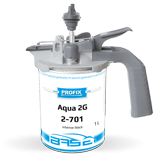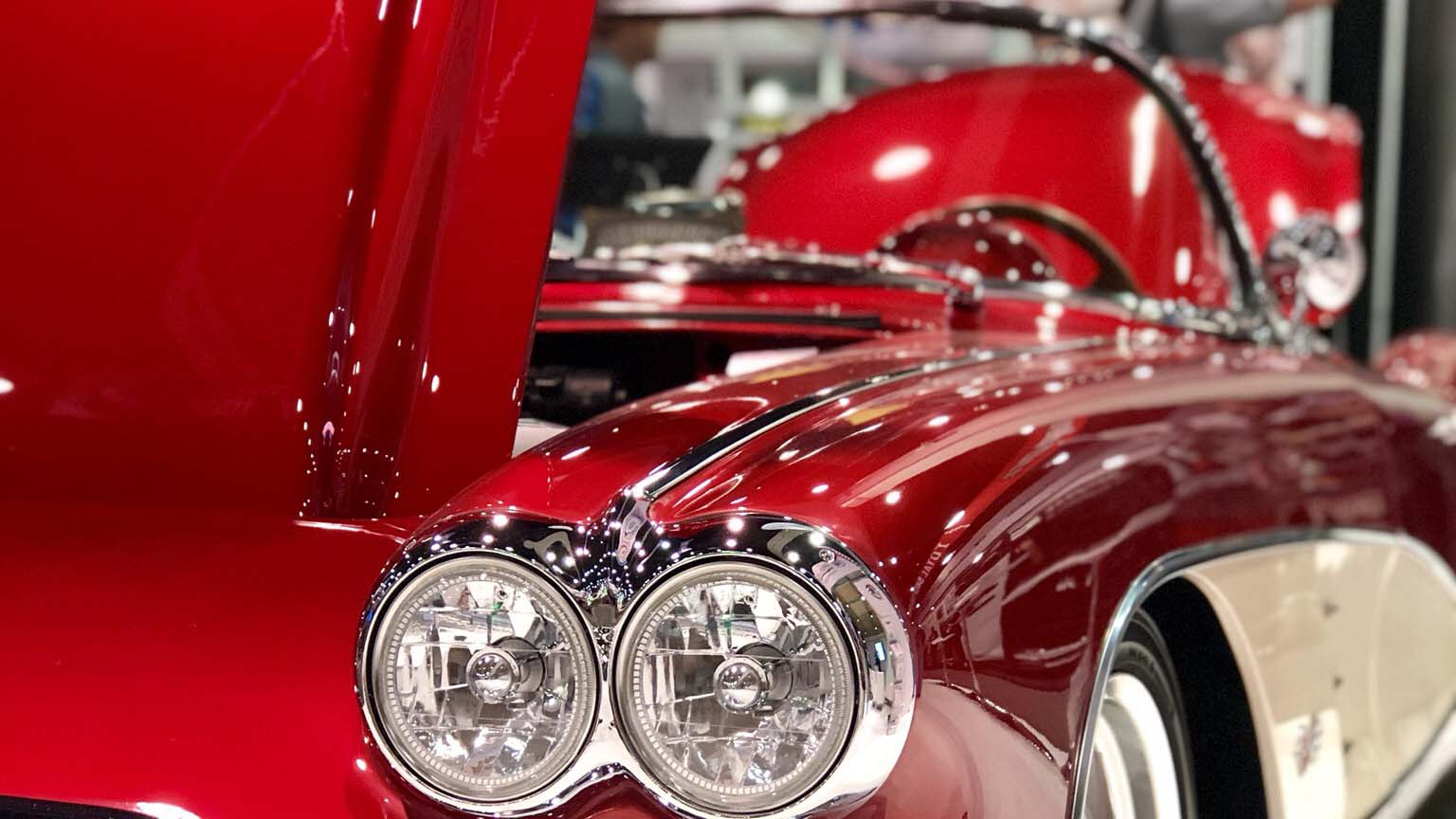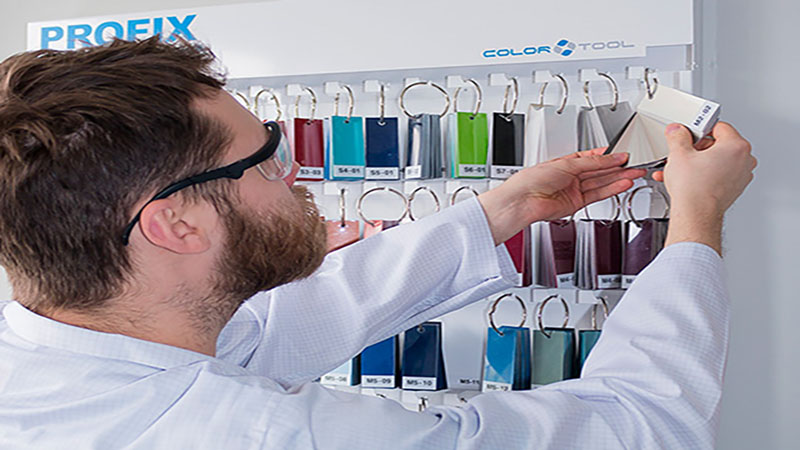Recently added
Most read
Why use the water-soluble lacquers, when the conventional ones are available?
Color matching is not the same as coloring
Color matching is not the same as coloring
It all began with a single model of car, known as the Model T, available in any color as long as it was black. The economic justification for this choice was the cost of black paint, which was decidedly cheaper than others when compared to others, while still being quite durable and (theoretically at least) repeatable. In our times, an experience automotive paint specialist knows full well that black is not always black, and the final effect is heavily influenced by painting technique and skill in color matching.
The phrase color matching is especially interesting and deserves a word of explanation. Color matching, just like shading, is a higher level of automotive paint work, as it is in large part work with a chromatic wheel. This work directly reflects the skill of the technician in matching the color. Customers often expect that after color matching, the recipe for the mixture will match the body 100%. They want to have just the repaired element painted without shading the adjacent elements.
Is it possible to paint just the repaired element without painting the adjacent areas?
To find an answer to that question, we should first remember that color is nothing more than a type of sensory impression, or a quality of an object that we understand through our sensory perceptions, or the result of the interplay of these two concepts. That’s why it’s important to remember that a paint which is ideal in the conditions of an automotive paint shop might turn out to be ideal only in these conditions, and in the light of day, or of artificial lights, or blue lights and so on, the color may be completely different. It’s worth remembering that light and its diffusion determine what the receptors in our eyes perceive, and as a result what impression our brain receives. In answer to the question, it is possible to paint in this way, but not always and not with every color. Sometimes it is essential to shade.
What do we need to remember about when starting the color matching process?
First of all, we need to remember that we are going to match solid colors and colors with optical effects differently. And before starting the color matching process, we need to understand the paint system that we’ll be working with very well. In order to be able to correctly match the color, we must be able to describe it precisely. And to do that, we’ll need to know some basic terminology:
HUE – this is the fragment of the chromatic wheel including the basic colors of red, orange, yellow, green, blue, and violet.
TONE – this is the where within the color wheel a given color is located, for example blue with shades of red, or blue with shades of green, moving around the wheel to the left or right.
BRIGHTNESS – this is where the color is in relation to black and white; the location of the color along the central axis of the color tree.
CLARITY – this is the location of the color in relation to the center of the chromatic wheel, dirty colors are nearer the center and clear colors are nearer the edge.
ZKnowledge of the workings of the chromatic wheel and knowledge of the system that we are working is most of what we need to quickly match a solid color. In the case of effects paints, we also need to be aware of differences in grain size, and of whether we are working with metallic, pearlescent, or Xirallic paints. It may seem that if there are problems with the grain, it’s enough to change its size. Nothing could be farther from the truth. We must remember that a change in the grain size also influences the color. The color matching process isn’t influenced only by the ability to correctly identify grain sizes, but also by an understanding of the principles of how the mix that we want to achieve functions. It is important to understand how it will react on a flat surface and also at an angle. Many people also forget about the phenomenon of metamerism when color matching. This involves the different perception of color depending on the type of light itis seen in.
Paint is usually lightened with pigments which are part of the formula for the mixture; if this is not done, the metamerism effect may occur, especially in the case of red and yellow colors. Metallic colors should not be lightened with whites, as white interferes with the metallic effect.
Can the process of color matching be automated?
It can be seen that the large number of variables in color matching create a need for a simplification of the process. Spectrophotometry with automatic color matching comes to the rescue. When this device was being developed, it was intended for something different than its current use in paint mixing studios. In the past, it only showed a chart of the wavelength of the light reflected from a picture of the paint coat, showing very precise proportions of the invisible light spectrum radiated in the white light reflected from the paint coat. Nowadays, newer models of spectrophotometers, even when the code number of the paint is not known, measure the results and produce a ready formula. After the measurement is taken, it is set to a computer, where coloristic software automatically searches for the relevant formula and optimizes it to better match the measured color. Undoubtedly, use of this tool speeds up the renovation process and avoids expensive mistakes. Everything depends on the database which a given spectrophotometer works with. The larger the database, the greater the probability that a satisfactory final result will be achieved. But it must be remembered that the spectrophotometer provides us with a formula for the HUE whose colorimetric and densitometric values (in other words, measurements of the optic density of transparent and opaque materials) are closest to those of the paint which we are attempting to match. Whether this formula is ideal depends on the sensitivity of our eyes. It should be remembered that the final effect also depends to a large extent on the pressure in the spray gun, and the layering technique used on the basecoat and clearcoat. We must also not forget that spectrophotometers are only machines, meaning that they can sometimes become uncallibrated; for this reason, knowledge of the system we are working with is essential.
Convenience costs
Unfortunately, the price of a spectrophotometer is substantial for a garage, which is why cooperation between manufacturer and customer in color matching is important. To facilitate the choice of color, special computer programs and color swatches are created. An invaluable aid in more difficult cases is the department of colorists who help develop and refine color formulas ( the so-called color service). Specialists with practical know-how in color matching and developing new formulas work in these color services, and in the leading companies on the market, they have access to high class spectrophotometers and light booths. Thanks to these technological solutions, the formula developed can be tested in various light conditions and at different angles, limiting the occurrence of metamerism (or the differing perception of the same color material depending on the type of light).
Undoubtedly, with problematic colors help is needed quickly, which is why the color matching systems offered by Profix feature support which ensures help in finding the correct color match within 48 hours. This rapid aid is essential so that the client is not left to face possible problems alone.
In this article, we have tried to give an answer to the title question. Unfortunately, this answer is not quite as simple as differentiating between black and white. This is because with many difficult color formulas, the color achieved may differ from the original color due to fading of the original after lengthy use. Which is why it is so important that every paint technician is familiar with the fundamental issues, and in difficult cases has access to professional help in the shortest time possible. The experience of colorists and the techniques which they use in conjunction with the latest technology allow a new color to be created or a difficult color to be matched, significantly reducing work time.










